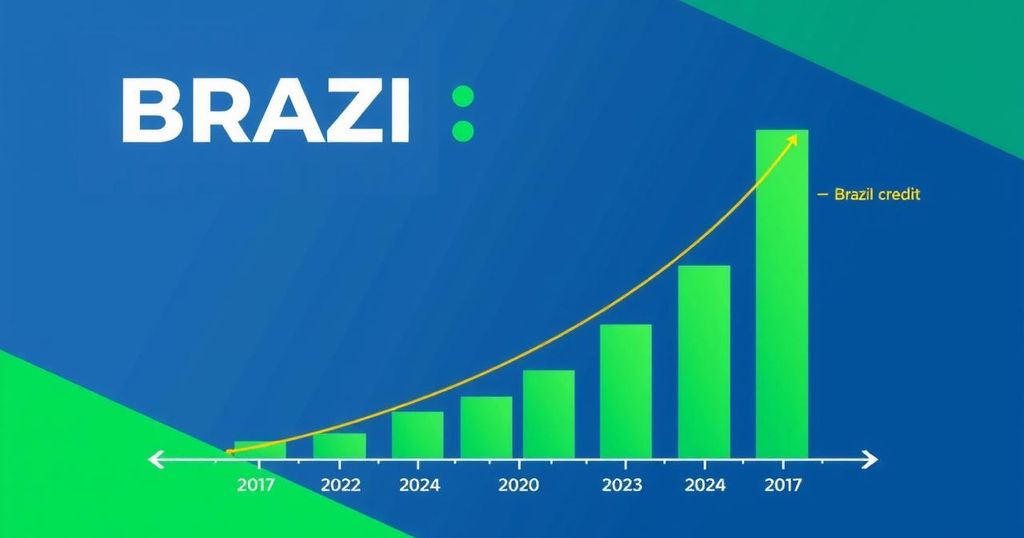Brazil’s outstanding credit stock was stable in January, yet saw an annual increase of 11.7%, totaling 6.462 trillion reais. Default rates rose to 4.4%, while lending spreads widened. Strong credit demand persists despite high interest rates, prompting policymakers to exercise caution regarding credit expansion and associated risks.
Brazil’s outstanding credit stock remained stable in January compared to December, according to recent data from the central bank. However, it exhibited an increase of 11.7% year-on-year, rising to a total of 6.462 trillion reais, equivalent to approximately $1.11 trillion, a slight rise from the previous month’s 11.5% increase.
The broad measure of default rates for consumer and business non-earmarked credit increased to 4.4%, up from 4.1% in December. Furthermore, lending spreads in this segment widened by 1.1 percentage points, reaching 28.2 percentage points, indicating increased borrowing costs amid the financial landscape.
Despite the aggressive tightening of monetary policy since September, where the benchmark interest rate was raised to 13.25%, credit demand has proven resilient, contributing to consumption pressures and inflation. There is anticipation of a further 100 basis-point increase in rates in the upcoming weeks.
In late February, the Financial Stability Committee highlighted the need for caution in light of ongoing credit expansion amid high borrowing costs and increasing household and corporate debt levels. Close monitoring of these factors remains imperative for policymakers to mitigate potential risks.
In conclusion, Brazil’s credit landscape remains stable in the short term while showing robust annual growth despite rising borrowing costs. The increase in default rates and lending spreads signifies the challenging environment borrowers face. Policymakers are urged to closely observe the ongoing credit expansion, especially as interest rates are expected to rise further, indicating the delicate balance between stimulating demand and controlling inflation.
Original Source: www.tradingview.com






